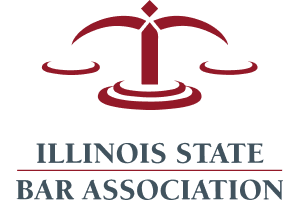California Women’s Prison Sexual Abuse Lawsuits
Fighting for Justice for Sexually Abused Female Inmates in California
At Injury Lawyer Team, we represent survivors of sexual abuse in women’s prisons throughout California. Too often, incarcerated women are subjected to horrific misconduct by correctional officers, medical staff, and private prison contractors who abuse their power in the very institutions meant to ensure safety.
We know how devastating it is for survivors to have their voices silenced inside correctional walls, and we’ve built our practice on exposing those abuses. Whether the sexual misconduct happens in a state-run facility, a federal prison, or a private detention center, we have the experience and resources to challenge powerful institutions. Contact us for a free consultation today!
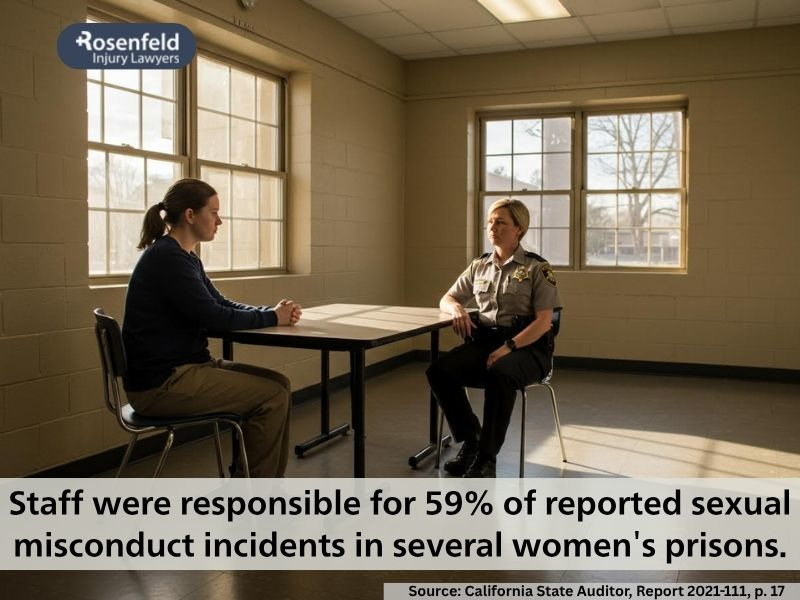
Allegations of Rampant Sexual Abuse of Female Inmates in California Prisons
Central California Women’s Facility in Chowchilla (CCWF)
The Central California Women’s Facility has been at the center of several high-profile sexual abuse lawsuits in recent years.
In 2025, Gregory Rodriguez, a former correctional officer, was convicted of 59 felony counts of sexual abuse and five misdemeanor counts of sexual battery for sexually assaulting women at CCWF. Survivors testified that he lured them into a parole board hearing room where no cameras were present. Their lawsuit settled in 2023 for $3.7 million.
Other officers have been implicated in assaults, harassment, and violent retaliation against survivors who filed sexual abuse claims. In one 2024 incident, more than 150 women were beaten and gassed after reporting misconduct, with one woman suffering a stroke.
Another lawsuit in 2023 accused officer Israel Trevino Jr. of sexually abusing inmates for over a decade, while a 2021case accused Warden Mike Pallares of harassment and coercion.
Multiple investigative reports, including one by the Los Angeles Times, have documented a culture at CCWF where abuse was condoned, complaints were ignored, and survivors were intimidated. Findings include staff trading contraband and privileges for sex, forcing women into unnecessary pelvic exams, and widespread cover-ups by institutional leadership.
California Institution for Women (CIW)
The California Institution for Women in Chino has also faced intense scrutiny.
In February 2025, six survivors filed a lawsuit against Dr. Scott Lee, the prison’s only gynecologist from 2016–2023, accusing him of using his position to commit sexual misconduct under the guise of medical care. Plaintiffs argued that the California Department of Corrections and Rehabilitation (CDCR) enabled his abuse by failing to intervene.
In September 2024, the United States Department of Justice opened an investigation into CIW and CCWF after survivors filed complaints of sexual assault, harassment, and retaliation. One lawsuit involved 21 women, with allegations ranging from groping and coerced oral sex to threats of punishment between 2014 and 2020.
The problems at CIW go back years. In 2017, three correctional officers — Robert Darrow, Tony Garcia, and Stephen Merrill — were criminally charged for sexually assaulting women in their housing units. In 2016, another federal lawsuit alleged officer Michael Ewell repeatedly assaulted a woman over six months, despite a history of misconduct known to correctional facility administrators.
Earlier, in 2012, two women filed a lawsuit alleging that CIW staff ignored multiple complaints that Officer Gary Swatzell was sexually abusing inmates. Survivors said they faced retaliation for reporting abuse, while Swatzell impregnated one woman before being sentenced to prison himself.
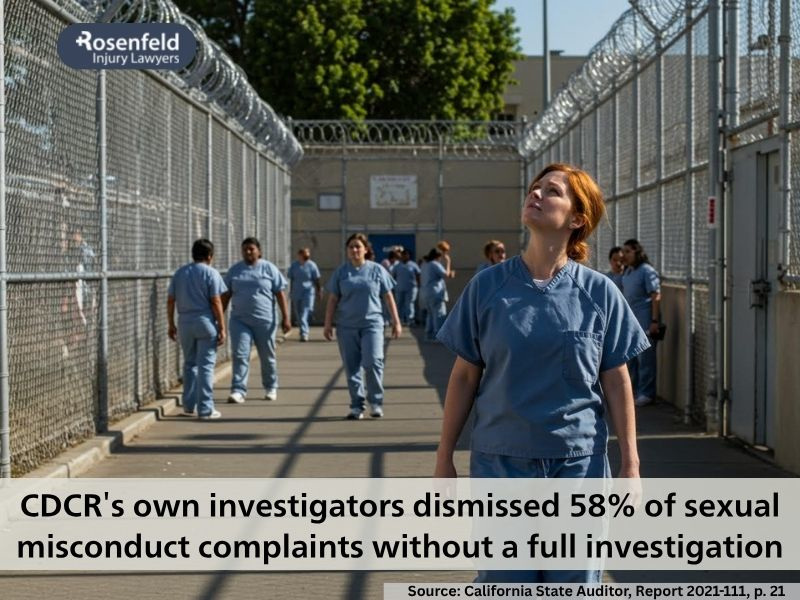
Valley State Prison for Women (VSPW)
A 1999 Amnesty International report confirmed widespread misconduct at Valley State Prison for Women. Survivors reported being verbally harassed, touched inappropriately during pat-downs, and subjected to retaliatory punishment for reporting abuse. The investigation revealed that male guards had nearly unrestricted access to women’s living quarters, bathrooms, and shower areas, leaving survivors with no sense of safety.
The report also highlighted severe staffing issues: only about a quarter of the staff were women, and most were assigned to administrative or teaching roles, while the “overwhelming majority” of custody and supervisory officers were men. This imbalance violated international human rights standards requiring that women incarcerated be supervised primarily by female officers.
Survivors further described being subjected to unnecessary pelvic exams and other intimate procedures by male doctors. Some women believed these exams were retaliatory or abusive, but feared that filing complaints would jeopardize their ability to receive essential medical treatment in emergencies.
Folsom Women’s Facility
The Folsom Women’s Facility in Represa closed in 2023, but its history still raises concerns. Given the documented pattern of sexual abuse and misconduct uncovered at other female correctional institutions in California, there is reason to believe that survivors at Folsom may also have been harmed.
While fewer allegations have been publicly reported compared to larger facilities, the same systemic issues were present: staff members with unchecked authority, limited oversight, and a culture where survivors often feared retaliation for reporting abuse. These conditions make it likely that some women incarcerated at Folsom also suffered sexual abuse but never came forward.
Federal Correctional Institution Dublin
FCI Dublin, sometimes referred to by survivors as a “rape club,” has become one of the most notorious examples of staff-on-inmate sexual abuse in the United States. Since 2021, multiple FCI Dublin employees — including a warden, chaplain, and food service supervisor — have been convicted of assaulting women under their custody.
In February 2023, food service foreman Enrique Chavez was sentenced to 20 months for sexually abusing an inmate in the prison’s food pantry. In December 2022, former warden Ray Garcia was convicted of molesting women and coercing them to pose for nude photographs. And in August 2022, chaplain James Highhouse received a seven-year sentence for abusing multiple incarcerated women.
Metropolitan Detention Center – Los Angeles (MDC-LA)
In 2022, a Bureau of Prisons officer at the Metropolitan Detention Center in Los Angeles pleaded guilty to sexually assaulting a female inmate who was seriously ill with COVID-19. The officer admitted to the attack and faces a potential 10-year prison sentence.
While this is the only case from MDC-LA that has gone to trial so far, it is unlikely to be an isolated incident. Like other facilities in California, survivors have alleged a culture where detention officers abuse their authority and prison officials fail to intervene. The conviction highlights how vulnerable women incarcerated in federal custody are when oversight breaks down.
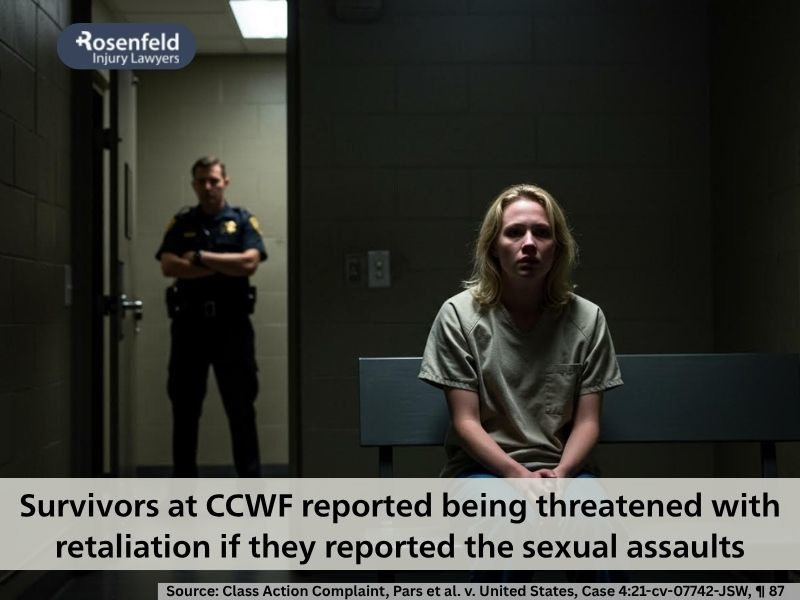
San Joaquin County Jail
In 2021, multiple detention officers at San Joaquin County Jail were indicted on charges of sexually assaulting female inmates. Allegations included repeated assaults, intimidation, and threats of retaliation to silence survivors. One officer was accused of numerous acts of sexual violence and cover-ups, while another faced indictment for abusing several women earlier that same year.
Century Regional Detention Facility – Lynwood
Survivors have reported widespread sexual assault and coercion at the Century Regional Detention Facility in Lynwood. According to complaints, both guards and medical staff engaged in misconduct by exploiting toxic power dynamics. Women were pressured into sexual activity in exchange for medical attention, protection, or basic needs, and faced retaliation or humiliation if they resisted.
Reports also suggest that prison officials and administrators may have ignored or covered up complaints, allowing staff members to continue sexually assaulting inmates unchecked.
Twin Towers Jail
The Twin Towers Correctional Facility in Los Angeles has been identified as one of the worst jails in the nation for reports of sexual abuse. A federal survey conducted by the Bureau of Justice Statistics under the Prison Rape Elimination Act (PREA) found alarming rates of misconduct inside the facility.
According to the survey, 8% of respondents at Twin Towers reported sexual victimization, more than twice the national average of 3.2%. Of these reports, 4.4% involved staff-on-inmate abuse, nearly triple the national average of 1.8%. Only five jails in the country had higher reported rates of sexual assault.
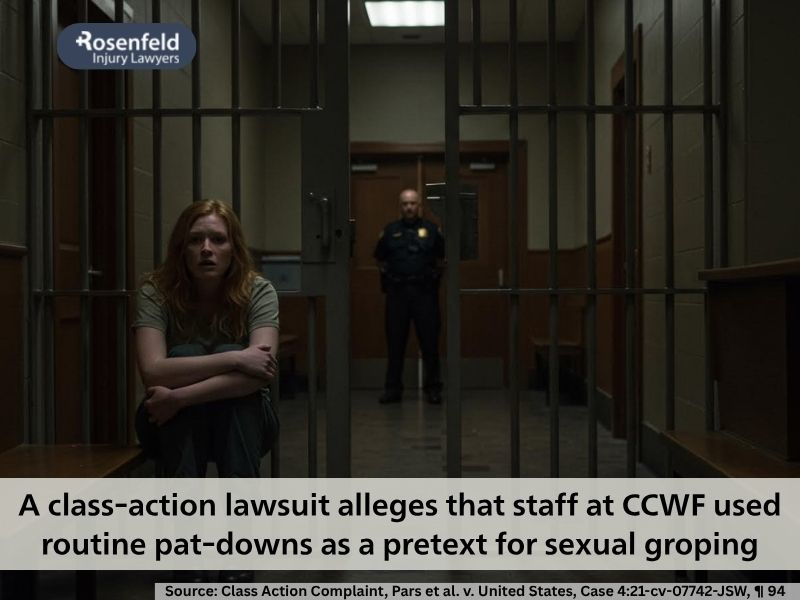
Why Choose Injury Lawyer Team
When it comes to lawsuits, experience matters. Our top-rated sexual abuse law firm has represented survivors of sexual abuse, assault, and misconduct in some of the most complex institutional cases nationwide. We know what it takes to stand up to state agencies, private contractors, and powerful corporations, and we’ve proven time and again that we can win.
Our attorneys are recognized by leading organizations in the legal field, including:
- Million Dollar Advocates Forum
- Super Lawyers
- American Association for Justice (AAJ)
- AVVO
Survivors of abuse inside facilities for incarcerated women in California face some of the most difficult circumstances imaginable: intimidation, cover-ups, and systemic neglect. That’s why choosing the best sexual abuse lawyer can make the difference between silence and justice.
Sexual Abuse Settlements & Verdicts Recovered by Our Law Firm
Over the years, our California sexual abuse law firm has recovered significant settlements for survivors of sexual abuse in institutional settings. Every case is different, but the following examples show how we’ve fought for accountability and helped survivors obtain justice through civil lawsuits.
- $21,000,000 – Hotel Sexual Assault
We represented a survivor who was assaulted by a hotel employee. The case revealed that the hotel failed to conduct a proper background check, allowing someone with a history of misconduct to be hired. The lack of oversight and corporate negligence contributed to the high settlement value. - $15,000,000 – School Sexual Abuse
Several survivors came forward after being groomed and abused by a private school coach. We built the case around patterns of institutional neglect, including the school’s failure to investigate repeated complaints. The number of victims and the long-term trauma played a key role in achieving this result. - $6,500,000 – Cruise Ship Sexual Assault
On a cruise, a staff member sexually assaulted a teenager. We showed that the cruise line failed to provide adequate supervision and ignored warning signs about the staff member’s behavior. The isolated setting and severe psychological harm increased the value of this case. - $5,000,000 – Therapist Sexual Misconduct
Two men were abused during therapy sessions. Our investigation uncovered that the facility failed to monitor the therapist’s conduct, despite prior reports of boundary violations. The betrayal of trust by a professional in a therapeutic setting was central to the outcome. - $3,000,000 – Hospital Sexual Abuse
A woman repeatedly assaulted by her OB/GYN at a large hospital sought justice. We proved that the hospital ignored multiple red flags and failed to protect patients, which made the institution directly liable for the survivor’s harm. - $2,750,000 – Summer Camp Sexual Assault
A counselor at a church-run summer camp raped a participant. We demonstrated that the camp lacked proper staff screening and failed to implement safety protocols. The young age of the survivor and the betrayal of a religious setting increased the damage. - $2,500,000 – Clergy Abuse
We secured this settlement for a survivor abused by a defrocked priest. The diocese’s knowledge of prior complaints and its failure to remove him from ministry were major factors in the resolution. - $2,000,000 – Church Maintenance Worker Assault
A man was attacked by a maintenance worker employed by a large church. The case exposed systemic negligence, as leadership had ignored earlier reporting of misconduct. The survivor’s bravery in speaking out helped secure this recovery. - $1,900,000 – Rideshare Sexual Assault
A woman was stalked and later assaulted by her rideshare driver. We argued that the company failed to conduct adequate safety checks and ignored earlier complaints. Corporate responsibility was key to the outcome. - $1,160,000 – Youth Detention Center Sexual Abuse
A guard sexually abused a teenager in a youth detention facility. The case highlighted failures in supervision, training, and staff accountability. The combination of physical harm and lifelong trauma shaped the value of the settlement. - $1,000,000 – After-School Program Assault
A man came forward after being assaulted while attending an after-school program. The lack of screening and staff oversight, combined with the breach of trust in a program designed for youth safety, contributed to the settlement.
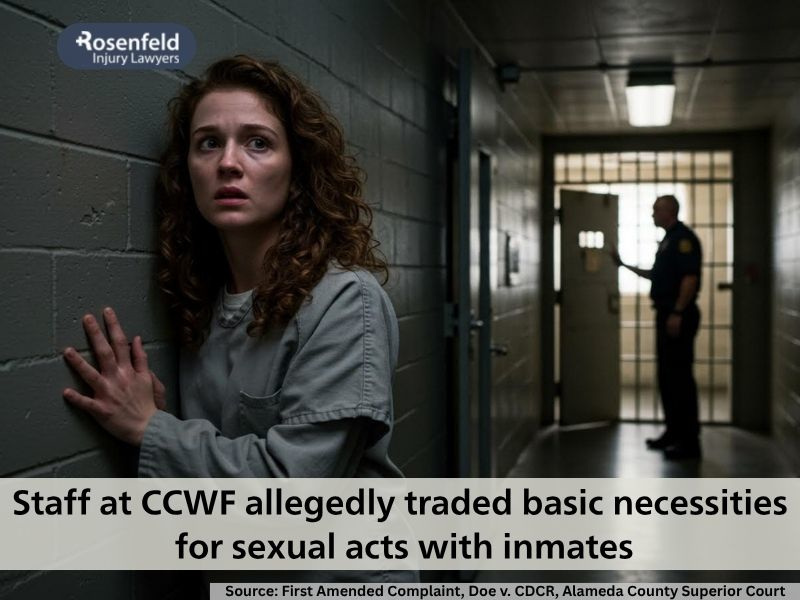
Types of Sexual Violence Against Female Inmates in California State and Federal Correctional Institutions
At Injury Lawyer Team, we represent survivors in a wide range of prison sexual abuse lawsuits. Every story is different, but most involve staff exploiting their authority in environments where survivors have little ability to protect themselves. These are some of the most common types of sex abuse cases we handle:
Sexual assault by prison officials and other staff
Too many survivors have come forward describing sexually assaulting behavior from guards. These cases often involve coercion, threats of punishment, or promises of basic necessities in exchange for silence.
Sexual harassment during intake, strip searches, or pat-downs
We’ve seen repeated reports of misconduct during invasive procedures. Survivors describe being groped, humiliated, or subjected to unnecessary contact under the pretense of security.
Abuse of power or coercion in exchange for basic needs or privileges
Some staff withhold food, safety, or access to programs unless women comply with sexual activity. This kind of coercion is one of the clearest abuses of authority we fight against.
Inmate-on-inmate sexual abuse enabled by staff negligence
Our cases also involve female inmates who were placed in unsafe conditions where officials ignored clear risks. When detention officers turn a blind eye, they share legal responsibility.
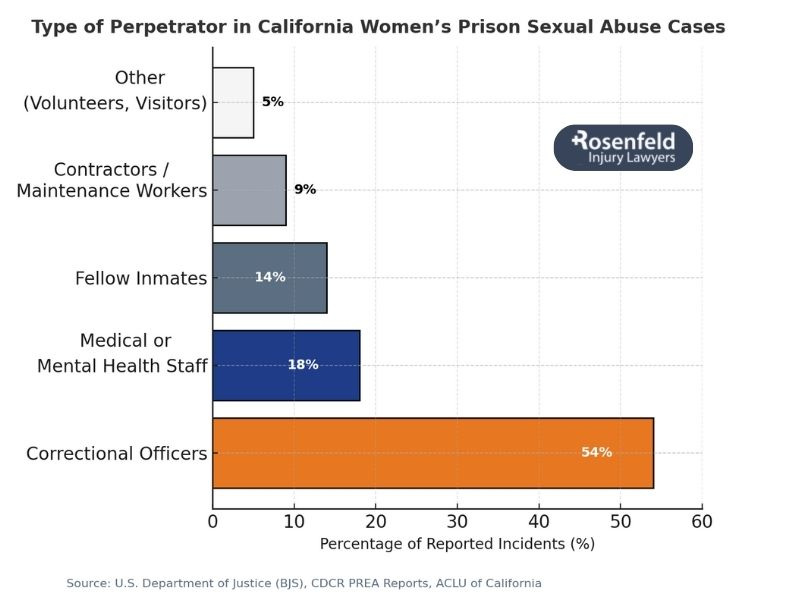
Retaliation and cover-ups after reporting
Many survivors who report abuse face retaliation, ranging from solitary confinement to denial of privileges. In some cases, administrators actively concealed evidence to protect those sexually assaulting inmates.
What Are the Most Common Causes of Sexual Abuse in Women’s Detention Centers in California?
Through our work, we’ve seen the same systemic failures repeated in state and federal facilities. Survivors often describe conditions that made abuse not only possible, but predictable. Some of the most common causes include:
Lack of Oversight
Many facilities, including the California Institution for Women and the Central California Women’s Facility, have long histories of complaints. Without outside monitoring, correctional officers can hide misconduct, falsify records, or retaliate against those reporting abuse.
Inadequate Training
Too often, correctional management fail to properly train staff on PREA (Prison Rape Elimination Act) standards. This leads to widespread confusion about reporting requirements and leaves survivors vulnerable.
Understaffing
Shortages of qualified officers and supervisors mean that male staff are sometimes left alone with female inmates, creating conditions where assaulting women can go unchecked.
Corruption and Cover-Ups
We have investigated cases where staff and supervisors worked together to hide evidence of sexually abusing inmates. This culture of silence allows abuse to continue for over a decade or longer.
Systemic Retaliation
Survivors who report abuse often face punishment, such as solitary confinement or denial of access to programs. Some are threatened during parole board hearing proceedings to keep them quiet. This climate of fear silences many victims before they can file civil claims.
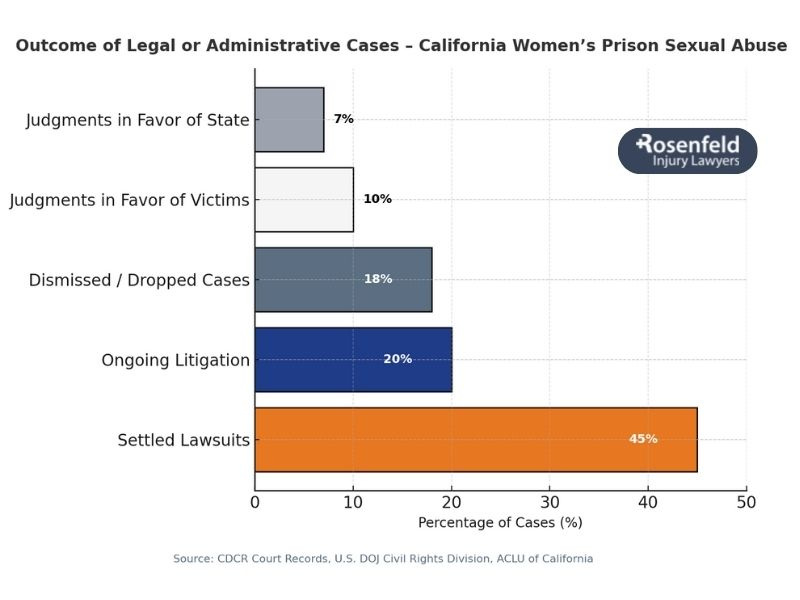
What Are the Most Common Injuries Female Inmates Sustain?
Being sexually abused by correctional staff can cause a lifetime of harm. Some of the most common injuries we see include:
Physical Injuries
Survivors of sexual assault inside prison often suffer bruising, lacerations, and other physical trauma. In more violent incidents — including cases where officers were accused of assaulting women with weapons present — survivors required hospitalization.
Reproductive Health Complications
Many women develop lasting reproductive injuries after coerced sexual activities, including infections, chronic pain, and pregnancy. Some endured unnecessary exams or invasive procedures under the guise of medical treatment, which left lasting damage.
Psychological Trauma
The mental health effects of sex abuse are profound. We regularly see survivors living with PTSD, depression, and severe anxiety. For some, the constant threat of retaliation or harassment has led to self-harm.
Difficulty Reintegrating into Society
After release, former inmates who were sexually assaulted behind bars often struggle to rebuild their lives. Many feel isolated and unsupported, particularly when the institutions that failed them refuse accountability.
What Damages Can Sexually Abused Female Inmates Recover in Civil Lawsuits in California?
Female inmates who were sexually abused inside a California prison can pursue compensation for different categories of damages depending on the facts of their case.
Economic Damages
These cover the tangible costs tied to abuse. Survivors often need long-term therapy, counseling, and ongoing medical treatment for reproductive health complications. Many also lose opportunities to earn income after release because the trauma makes it harder to reintegrate.
Non-Economic Damages
Beyond financial losses, survivors deserve financial compensation for the human toll of sex abuse — including pain and suffering, emotional distress, and loss of enjoyment of life. These damages recognize that the harm caused by sexual assault or coerced sexual activity inside prison continues long after incarceration ends.
Punitive Damages
In cases where prison staff or institutions engaged in deliberate cover-ups or allowed sexual abuse to continue unchecked, we pursue punitive damages. These damages are meant to punish systemic failures and deter further misconduct by the California Department of Corrections and Rehabilitation and private prison corporations.
What Is the Average Women’s Prison Sexual Abuse Payout in California?
Based on recent data, the average payout in California women’s prison sex abuse cases is approximately $2.5 million, with most cases falling between $1 million and $5 million. The median settlement amount is about $1.35 million, meaning half of the cases resolve for more and half for less.
In our experience, the value of a survivor’s case depends on several key factors:
- Severity of the Abuse – Cases involving repeated assault or violent attacks by staff tend to result in higher awards.
- Long-Term Medical and Mental Health Impact – Survivors who require extensive therapy, counseling, or ongoing medical treatment for reproductive injuries often receive larger settlements.
- Number of Victims – When multiple female inmates or former inmates step forward against the same perpetrator — such as in cases involving inmates at the Central California Women’s Facility — the scope of harm increases the case value.
- Institutional Cover-Ups and Punitive Damages – Where the CDCR or other institutions are found to have ignored, concealed, or enabled sexual abuse, courts may award punitive damages designed to punish systemic misconduct.
Why You Need a Women’s Prison Sexual Abuse Lawyer
Female inmates who were sexually abused inside a California prison face unique barriers that most people on the outside can’t imagine.
Survivor Intimidation
Many of our clients feared retaliation for speaking out. Staff often hold complete power over housing, food, and privileges, which makes reporting sex abuse dangerous. Some survivors were punished or threatened in a parole board hearing room after trying to expose misconduct.
Lack of Transparency Inside Prisons
Institutions are designed to protect themselves. Facility leadership frequently denies wrongdoing, destroys records, or conceals surveillance footage to protect abusive correctional staff. Without legal intervention, survivors rarely get access to the evidence needed to prove sexual assault or other misconduct.
Complex Federal and State Laws
These cases often involve overlapping laws. Handling these legal frameworks requires attorneys experienced in sex abuse cases and nationwide correctional litigation.
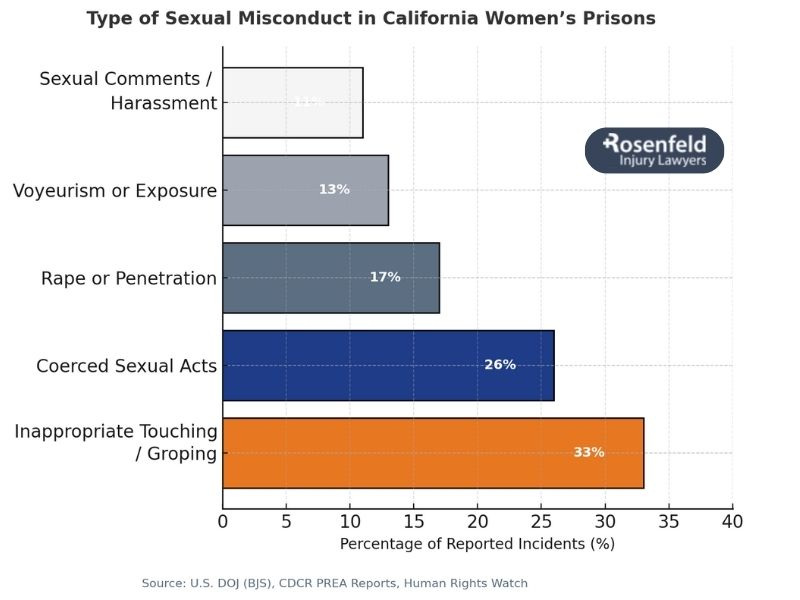
Need for Specialized Evidence Gathering
Proving abuse behind prison walls takes a dedicated team. Our law firm works with trauma experts, medical professionals, and investigators who understand how to uncover patterns of sexually abusing female inmates, even when institutions try to hide them.
How Common Is Sexual Assault and Abuse Among Female Inmates in California?
National data shows that sexual abuse in prisons is widespread, and California facilities are no exception. According to the Bureau of Justice Statistics, thousands of incidents are reported each year, yet only a fraction are ever substantiated.
In 2019, California prison authorities logged 236 allegations of non-consensual sexual behavior between incarcerated people, with 6 substantiated. They also recorded 168 allegations of abusive sexual contact (5 substantiated) and 88 allegations of sexual harassment (just 1 substantiated).
The next year, 2020, saw modest shifts. California prisons reported 222 allegations of non-consensual sexual behavior between incarcerated people, with 8 substantiated; 129 allegations of abusive sexual contact, with 3 substantiated; and 122 allegations of sexual harassment, with 6 substantiated.
Staff-on-incarcerated-person abuse tells a similar story. In 2019, California reported 327 allegations of staff sexual misconduct, with 11 substantiated, and 288 allegations of staff sexual harassment, with 8 substantiated. In 2020, there were 315 allegations of staff misconduct (only 9 substantiated) and 304 allegations of staff sexual harassment (2 substantiated).
What Laws Govern Lawsuits Filed for Female Inmate Sexual Abuse in California?
When California female inmates pursue civil claims, we draw from both federal and state law to hold individuals and institutions accountable.
The Prison Rape Elimination Act of 2023 (PREA) sets nationwide standards for preventing, investigating, and responding to sexual abuse and misconduct in correctional facilities. While PREA doesn’t give survivors a direct right to sue, violations can be powerful evidence in lawsuits.
42 U.S.C. §1983 allows survivors to bring claims against state actors who violated their constitutional rights. The Federal Tort Claims Act (FTCA) allows survivors sexually abused at a federal correctional institution to file lawsuits against the United States for wrongful acts by federal employees.
Article I, § 17 of the California Constitution prohibits cruel or unusual punishment, which courts have recognized as including the failure to protect incarcerated people from assault or sexual abuse by staff.
California Civil Code § 52.1 (Bane Act) allows a civil cause of action when someone’s constitutional rights are interfered with through threats, intimidation, or coercion, including retaliation against survivors who report sexual abuse.
California Government Code § 815.2 & § 820 makes public entities like the California Department of Corrections and Rehabilitation (CDCR) liable for injuries caused by the acts or omissions of their employees, including male staff and prison officials who allow rampant sexual abuse to occur.
California Penal Code § 2635–2639 makes it a crime for prison staff to engage in sexual acts with incarcerated people, even if consent is claimed. Civil suits often reference these statutes to show that misconduct was unlawful under California law.
How Long Do Sexually Abused Female Inmates Have to Take Legal Action in California?
Most federal claims brought under 42 U.S.C. § 1983 borrow the statute of limitations from the state’s personal injury law. California has adopted survivor-friendly reforms that expand the time available to pursue civil lawsuits involving sex abuse.
Under Cal. Code Civ. Proc. § 340.16, survivors of sexual assault generally have 10 years from the abuse or 3 years from discovery of the injury (whichever is later) to file suit. For survivors who were minors at the time of abuse, Cal. Code Civ. Proc. § 340.1 allows filing until age 40, or 5 years after discovering the abuse, whichever is later.
When suing the CDCR or other state agencies, survivors must also comply with the California Government Claims Act. This usually requires filing an administrative claim with the state within 6 months of the incident, though exceptions apply in sexual abuse cases. Once that claim is rejected, survivors typically have 6 months to file their lawsuit in court.
Many states, including California, allow tolling (pausing) of deadlines while a survivor is still incarcerated. Courts also recognize that survivors who were abused inside prison often delay reporting due to retaliation, which can extend the filing period.
Who Is Legally Liable for Sexual Abuse in Women’s Correctional Facilities?
When we bring lawsuits for sexual abuse in California facilities for incarcerated women, one of the most important steps is identifying every party responsible. Survivors deserve justice not only from the individuals who committed the abuse but also from the institutions that enabled it. Liability often extends to:
- Correctional Officers and Staff Members – We hold accountable the detention officers, medical providers, and other staff who directly engaged in assault, harassment, or other misconduct.
- Supervisors and Wardens – Liability also reaches up the chain of command. Facility leadership, wardens, and supervisors may be liable when they ignore complaints, fail to stop sexual abuse of inmates, or cover up misconduct.
- California Department of Corrections and Rehabilitation (CDCR) – The CDCR itself may be named in lawsuits when systemic failures caused or allowed sexual misconduct to continue. For example, when correctional facility administrators ignored reports or failed to remove a former correctional officer with a history of assaulting female inmates, the CDCR may be directly liable.
- Federal Bureau of Prisons – For survivors abused at facilities like FCI Dublin, liability may rest with the Federal Bureau of Prisons under the Federal Tort Claims Act.
- Private Prison Corporations – In facilities managed by private contractors, corporations can be sued directly for negligent hiring, poor supervision, or failing to prevent misconduct by their employees.
Common Defenses in Sex Abuse Cases Involving Prisons
When we file women’s detention center sexual abuse lawsuits, institutions rarely admit fault. Instead, they rely on common defenses designed to silence survivors and protect the system. We know these tactics well, and we know how to fight back.
One of the most frequent defenses is a flat denial of liability. Detention officers or other staff may claim that abuse never happened or that the encounters were “consensual.” But by law, incarcerated people cannot legally consent to sexual acts with staff. Any such claim is an attempt to excuse sexually assaulting and abusing inmates.
Another common defense is to attack the survivor’s credibility. Institutions sometimes argue that survivors fabricated their stories to gain privileges, revenge, or release benefits. We counter these arguments with medical records, mental health evaluations, and corroborating testimony from other female inmates and former inmates who experienced the same misconduct.
Prisons also try to rely on the statute of limitations as a shield. They argue that too much time has passed since the survivor suffered sexual abuse. In California, we push back by pointing to extended filing periods for claims under the Code of Civil Procedure, as well as tolling provisions for survivors who were incarcerated or intimidated into silence.
Finally, institutions often argue a lack of notice, claiming supervisors and facility leadership didn’t know abuse was happening. We break this defense down by uncovering investigation reports, PREA complaints, grievance records, and witness testimony showing a pattern of cover-ups by correctional facility administrators.
How to Strengthen Your Women’s Correctional Facility Sexual Abuse Case in California
We know that coming forward is difficult, especially when custody staff and wardens hold all the power. That’s why we guide survivors through steps that can make their claims stronger in court.
The first step is to seek medical care whenever possible. Survivors who were sexually assaulted should request immediate treatment and ask that their records be documented. Even if the facility tries to conceal misconduct, those medical files can later serve as critical evidence.
It’s also important to preserve evidence. Female inmates who have been sexually abused inside a California prison should keep copies of grievance forms, PREA reports, or any written threats received from correctional staff. If retaliation occurs, document that too. Retaliation itself is often proof of institutional wrongdoing.
Whenever it feels safe, survivors can report misconduct to outside agencies. That may include the Office of the Inspector General, the U.S. Department of Justice, or state watchdog groups. Even if a survivor fears immediate retaliation, outside complaints help establish a record of sexual abuse within the facility.
Finally, the most powerful step is to contact an experienced law firm. Our team knows how to subpoena prison records, uncover investigative reports, and gather testimony from other—current and former—female inmates who endured the same treatment. By acting quickly, we can stop staff members and prison administrators from covering their tracks and build the strongest possible case.
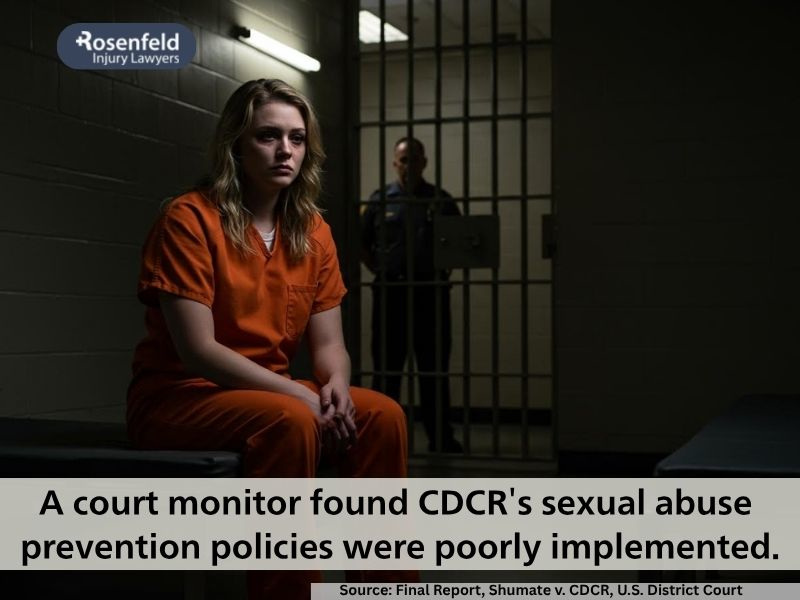
How a California Women’s Prison Sexual Abuse Lawyer Can Help
At Injury Lawyer Team, we know that sexually abused female inmates often feel trapped and powerless. Our job is to change that. When you work with our law firm, you get advocates who know how to break through the walls of secrecy that shield abusive detention officers and negligent supervisory personnel.
We start by conducting a thorough investigation. That means subpoenaing prison records, reviewing PREA complaints, and uncovering investigation reports that prisons try to keep hidden.
We also work with trauma experts, medical professionals, and psychologists to document the long-term effects of sex abuse, from reproductive injuries caused by being sexually assaulted to the PTSD survivors carry after being sexually assaulted or harassed by staff members.
Our attorneys also know how to navigate the unique challenges of women’s correctional facility sexual abuse lawsuits. Inside these facilities, survivors are often intimidated into silence. Evidence is concealed, and retaliation is common. We cut through these obstacles by gathering testimony from former and current female inmates, and even honest members of correctional staff who are willing to expose what they witnessed.
Once we build a case, we fight aggressively in court. That includes proving not just the individual misconduct of an abuser, but also the systemic failures that enabled sexual abuse to continue for years. By holding both individuals and institutions liable, we push for justice that lasts.
FAQs
How much does a women’s prison sexual abuse attorney cost in California?
We handle all cases on a contingency fee basis. That means there are no upfront costs. Our law firm only gets paid if we win your case and recover compensation.
Who can file a women’s prison sexual abuse claim?
A claim may be filed by survivors themselves, or by guardians if the survivor was a minor at the time of abuse.
Can I file a lawsuit if the facility is now closed?
Yes. Survivors can still pursue sexual abuse lawsuits even if a prison or jail has since closed. The fact that a facility shut down does not erase responsibility for the abuse that occurred there. Survivors who were abused in a closed facility such as the Folsom Women’s Facility or other institutions still have legal options.
Can I file a lawsuit if I never filed a formal complaint at the facility?
Absolutely. Many survivors of sex abuse in prison do not report what happened while incarcerated. Fear of retaliation from detention officers or disbelief from wardens kept countless women silent. California law recognizes this reality. Even without a formal grievance or PREA report, survivors can still bring lawsuits using medical records, witness testimony, or other evidence to prove what happened.
Can I file a lawsuit if the person who abused me was never criminally charged?
Yes. A criminal case and a civil lawsuit are separate. Many survivors win cases even when the abuser was never prosecuted or convicted. Civil cases have a lower burden of proof, meaning survivors can still pursue compensation and hold institutions accountable even if prosecutors declined to file charges. What matters is proving that abuse occurred and that those responsible — including abusive prison staff or negligent prison administrators — are held to account.
Are there any protections for survivors who face retaliation for reporting?
Yes. Survivors who file claims are legally protected under the Prison Rape Elimination Act (PREA), California’s Bane Act, and federal civil rights laws. These protections forbid retaliation from detention officers, officials, or other staff when survivors come forward about sex abuse. If retaliation occurs, it can become part of a stronger civil lawsuit.
Book a Free Consultation
At Injury Lawyer Team, we’ve seen how devastating it is when survivors of sexual abuse in a California women’s prison are ignored or silenced. Too many prison guards, officials, and other staff have used their power to exploit vulnerable people, while institutions like the CDCR turned a blind eye. Our mission is to change that.
If you or a loved one was abused while incarcerated, we are here to help you take back your voice. Our law firm handles every case on a contingency fee basis. That means you never pay out of pocket, and we only get paid if we recover compensation for you.
We know how to cut through retaliation, cover-ups, and investigation reports designed to protect abusers, and we are not afraid to hold institutions accountable in court. Contact us today to schedule a free, confidential consultation with our team. Together, we can pursue justice, demand change, and secure the accountability every survivor of sex abuse deserves.
All content undergoes thorough legal review by experienced attorneys, including Jonathan Rosenfeld. With 25 years of experience in personal injury law and over 100 years of combined legal expertise within our team, we ensure that every article is legally accurate, compliant, and reflects current legal standards.



